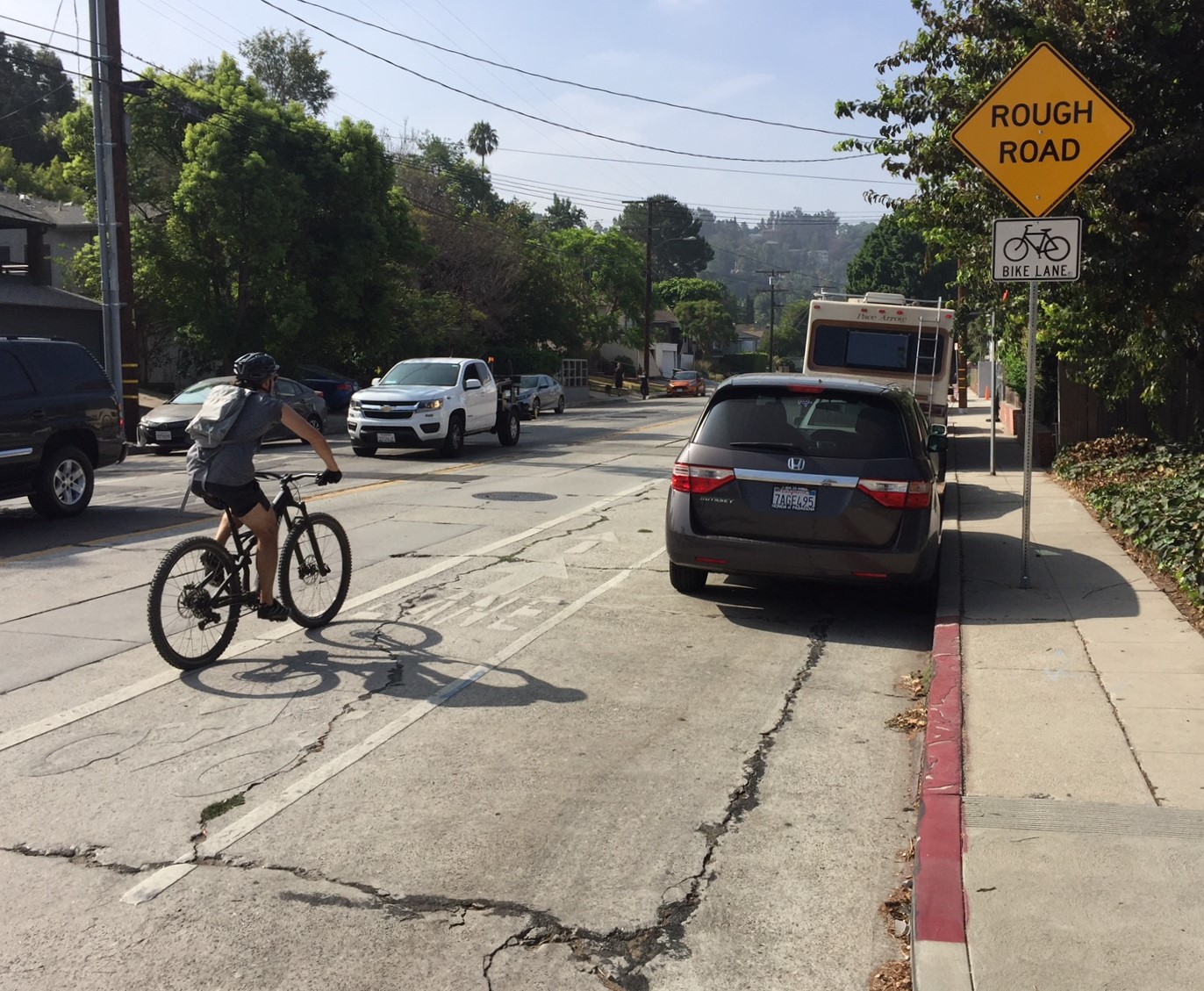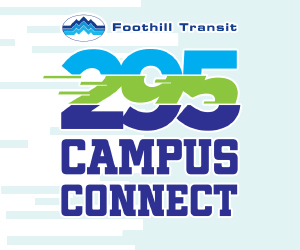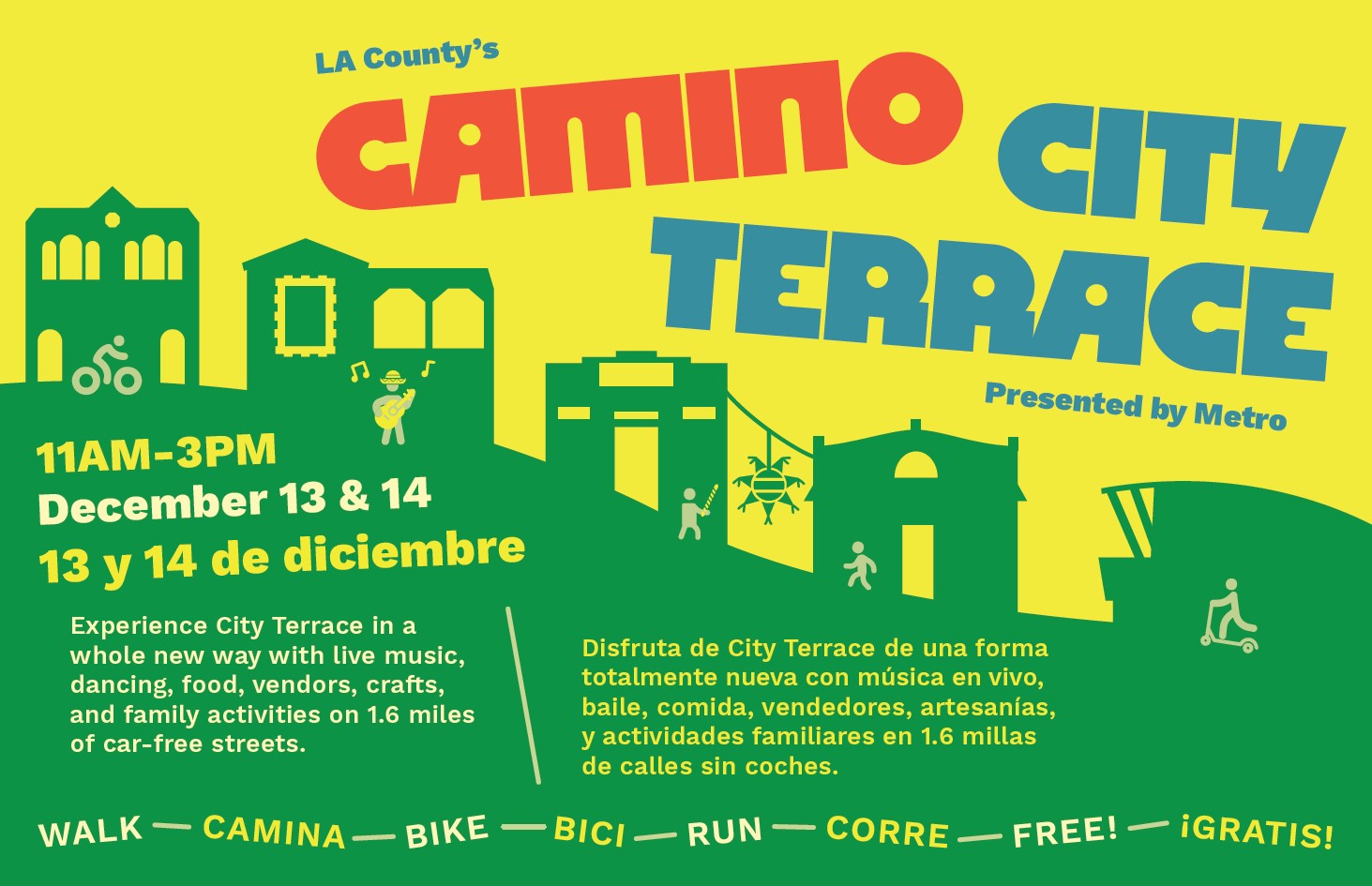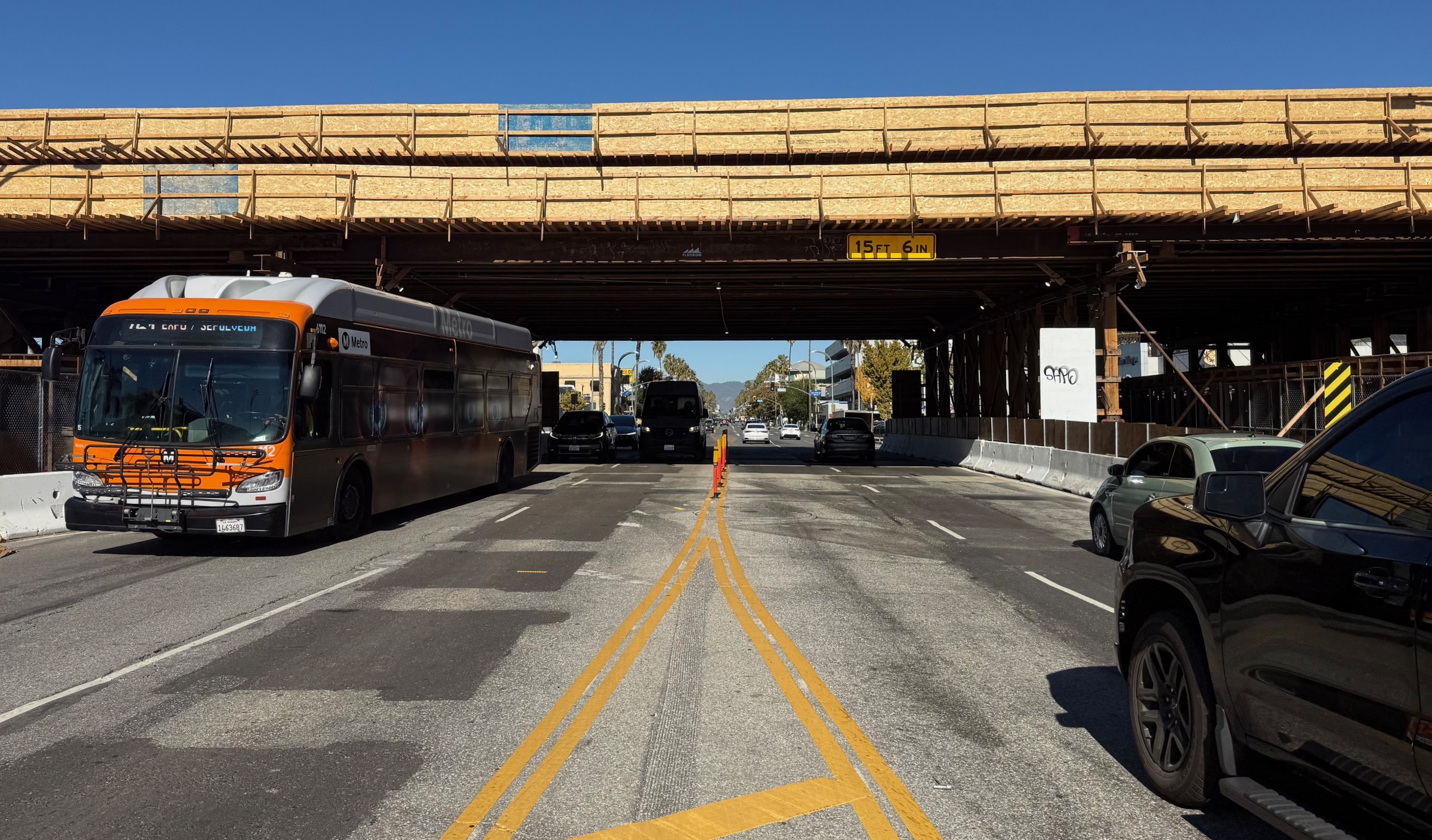Note: Metropolitan Shuttle, a leader in bus shuttle rentals, regularly sponsors coverage on Streetsblog San Francisco and Streetsblog Los Angeles. Unless noted in the story, Metropolitan Shuttle is not consulted for the content or editorial direction of the sponsored content.
The city of L.A. recently put up new "rough road" signs along part of Griffith Park Boulevard. There are sixteen of these new signs, facing both ways at all signalized and stop sign intersections below Los Feliz Boulevard.
Due to two solo bike fall lawsuits (one of which occurred in a bike lane, one did not), the City Attorney has recommended removing bike lanes from Griffith Park Blvd. The city Transportation Department (LADOT) is not planning to remove the lanes immediately, but is currently working with the Bureau of Street Services to evaluate repairs to various city bikeways. Griffith Park Blvd is one of the city's aging concrete streets, cracking in many places.
A few more observations about Griffith Park Boulevard:
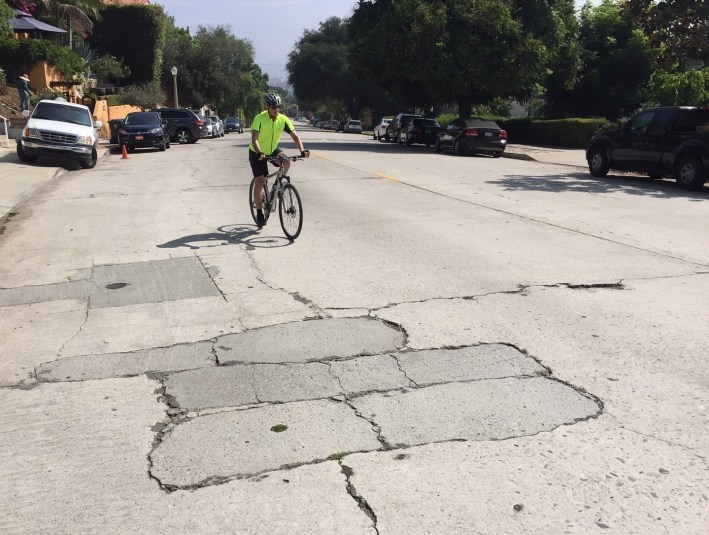
Double Standard?
The city's new signs are only located south of Los Feliz Boulevard.
South of Los Feliz Blvd, where there are bike lanes, Griffith Park Blvd is mostly flat and more typically used by utilitarian cyclists to access schools, stores (Trader Joe's), and restaurants.
In this area, the city paid $500,000 to settle one cyclist crash lawsuit in June 2018.
So far, the city responded by adding signs - while evaluating repairs and bike lane removal.
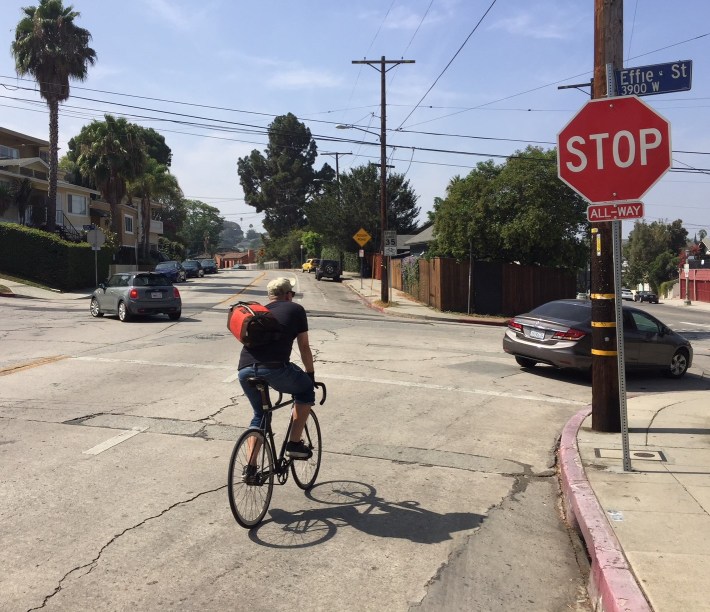
North of Los Feliz Blvd, where there are no bike lanes, Griffith Park Blvd is mostly used by recreational cyclists to access Griffith Park. This neighborhood is more affluent than the area below Los Feliz Blvd, though none of this Los Feliz/Franklin Hills neighborhood is low income.
In this area, the city paid $200,000 to settle one cyclist crash lawsuit in October 2017.
The city responded by repairing 15,000+ square feet of concrete.
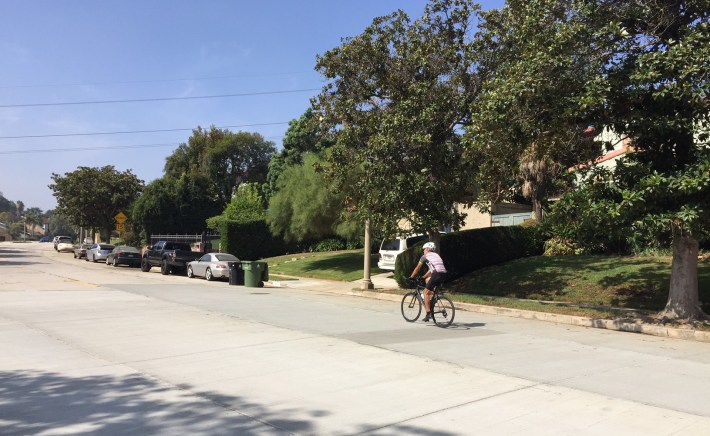
If this discrepancy holds (which is admittedly unlikely - as stated, the city is evaluating repairs and lane removal), it seems like it could be a double standard. Richer neighborhood gets actual street repair; less well-off area just gets signs.
In any case, bicyclists are urging the city to actually fix the street.
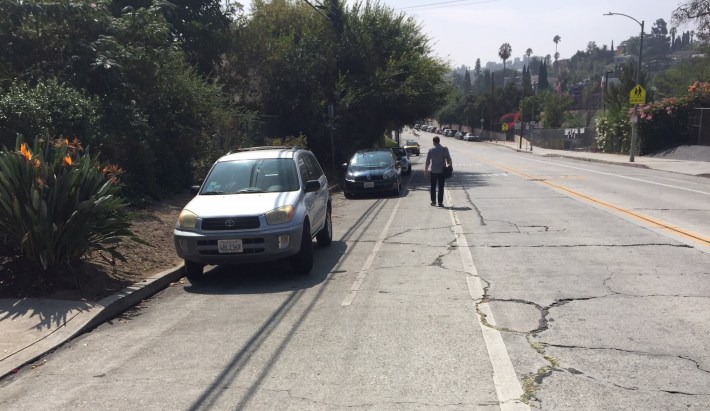
Missing Sidewalk
There's no sidewalk on the east side of Griffith Park Boulevard between Monon Street and Colony Circle - partially across from John Marshall High School. In this area the bike lane serves as a de facto walking path.
Would it really help city liability to remove the bike lane here, putting pedestrians (likely some students walking to school) closer to fast-moving cars? Do City Attorneys actually go visit streets they're recommending for bike lane removal?
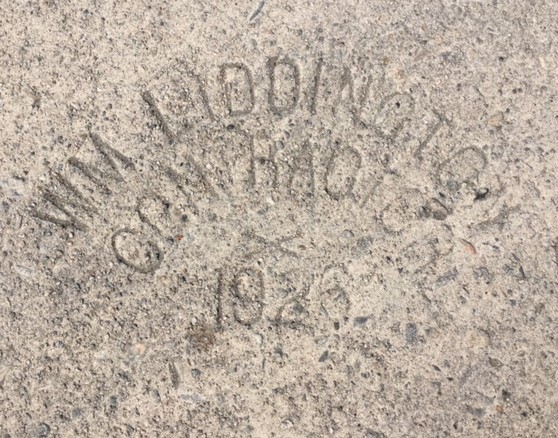
Establishing the Pavement Date
For what it's worth, there are a couple of pavement stamps that establish that Griffith Park Blvd was concreted in 1926. Streetsblog had been reporting the age of the street as "more than sixty years old," having been paved "circa the 1930s-1940s" but it turns out the street is 92 years old.
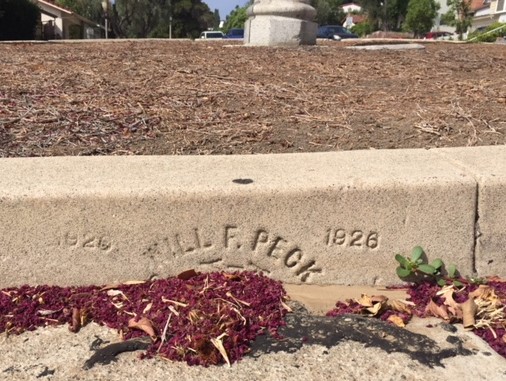
It's not really pertinent to the current controversy, but these concrete streets are from the '20s: an age when extensive public works were a sign of L.A.'s optimistic emergence as a city that considered itself world class. They're not from the '30s-'40s depression-era public works programs.
Though Griffith Park Blvd. is cracked and rough in spots, it has aged remarkably well. Even given recent lawsuits, the durability of these concrete streets were probably a good long-term investment for the city. It is up to the present generation to bring them back up to the state of good repair that earlier generations passed along to us.
